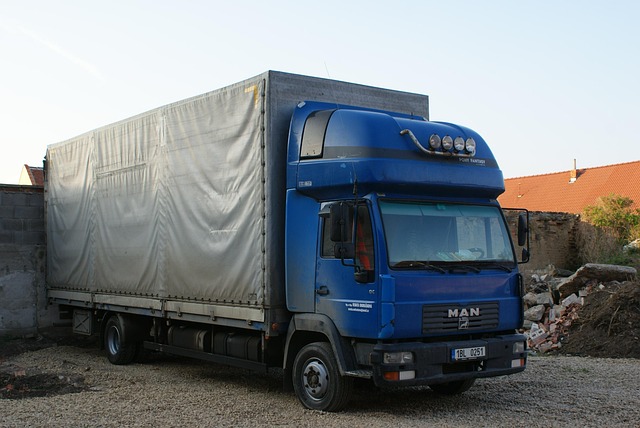Looking to register your car in California? This guide walks you through the process step-by-step. From understanding essential requirements to choosing the right registration method, we’ve got you covered. First, gather all necessary documents, including proof of ownership and insurance. Ensure your Vehicle Identification Number (VIN) is accurate using a reliable VIN verifier. Then, decide between online or in-person registration, and complete the application process smoothly.
- Understand California Car Registration Requirements
- Gather Necessary Documents for Vehicle Registration
- Verify Vehicle Identification Number (VIN) Accuracy
- Choose a Suitable Registration Method in California
- Submit Application and Complete Registration Process
Understand California Car Registration Requirements

Before registering your car in California, it’s crucial to understand the state’s specific requirements. One key step is ensuring your vehicle has a valid and accurate Vehicle Identification Number (VIN) verifier. This unique 17-character code serves as the fingerprint of your car and is essential for identification purposes during registration.
In California, you’ll need to present a current VIN inspection or certification from an approved inspection station or mobile vin verifier. This verification process ensures that your vehicle meets safety and environmental standards set by the state. It’s recommended to utilize reputable services like a mobile vin inspection for convenience and reliability, ensuring a hassle-free car registration experience in California.
Gather Necessary Documents for Vehicle Registration

Before heading to the California Department of Motor Vehicles (DMV) or any authorized agent, ensure you have all the required documents for vehicle registration. The key document is the Vehicle Identification Number (VIN), which can be quickly verified through a mobile VIN verifier or by checking the vehicle’s labels and identification plates. This process is crucial as it ensures that your car meets all legal standards before being approved for registration.
Additionally, you’ll need proof of ownership, typically in the form of a title document; valid driver’s licenses or ID cards for all owners; insurance verification demonstrating current coverage; and any applicable fees. A mobile VIN inspection can help streamline this process by providing instant validation, making it easier to address any issues before reaching the DMV.
Verify Vehicle Identification Number (VIN) Accuracy

Before registering your car in California, it’s crucial to ensure the Vehicle Identification Number (VIN) is accurate and legitimate. This unique 17-character code is a vital component during the registration process as it helps verify the vehicle’s history and authenticity. A simple yet effective step is to use a VIN verifier to cross-check the number against databases that record vehicle details, ensuring no discrepancies or signs of theft.
For convenience, consider opting for a mobile VIN inspection or verification service. These services allow you to easily check your car’s VIN accuracy from the comfort of your home or even while on the go. This extra step can save time and prevent potential issues down the line, as an incorrect VIN may lead to registration delays or even legal complications in California.
Choose a Suitable Registration Method in California

In California, there are several methods to register your car, each with its own benefits. The first step is to decide on a suitable registration approach that aligns with your needs and preferences. One popular option is conducting a mobile vin inspection, which allows you to get your vehicle registered from the comfort of your home or office. This service utilizes a vin verifier to check the vehicle’s history, ensuring all documents are in order before processing the registration.
Alternatively, you can opt for traditional methods like visiting a California Department of Motor Vehicles (DMV) office for a vin inspection. While this may require more time and effort, it provides an opportunity to interact with DMV staff who can offer guidance and answer any questions directly. The choice ultimately depends on your convenience, the complexity of your vehicle’s registration status, and whether you prefer a digital or in-person process.
Submit Application and Complete Registration Process

After gathering all the necessary documents and verifying your vehicle’s eligibility for registration, it’s time to submit your application. The process typically begins by filling out a California Vehicle Registration Application form, available online or at any local DMV office. Here, you’ll be required to provide detailed information about your vehicle, including its make, model, year, and unique VIN (Vehicle Identification Number). This crucial step ensures that the registration is accurate and secure.
Once your application is complete, it’s essential to have a vin inspection or mobile vin verification done by an authorized examiner. This involves a thorough check of your vehicle’s VIN using specialized tools and databases to confirm its authenticity and history. Many services offer mobile vin inspection, making the process convenient for you. After successful verification, submit your application along with the required fees, and your car will be officially registered in California.
Registering a car in California is a straightforward process once you understand the requirements and gather the necessary documents. By verifying your Vehicle Identification Number (VIN) using a reliable VIN verifier, you can ensure accuracy and compliance from the start. Choose between online or in-person registration methods that best suit your needs, and complete the application process to officially register your vehicle. Remember, proper documentation and a valid VIN check are key to a smooth registration experience in the Golden State.
